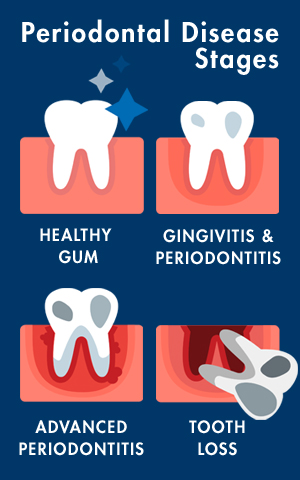Gum disease is a common oral health issue that can range from mild to severe, impacting the health of your teeth and gums. The two primary stages of gum disease are gingivitis and periodontitis. While they are related, these conditions differ significantly in terms of their symptoms, severity, and treatment. Understanding the differences between gingivitis and periodontitis is crucial for maintaining good oral health and preventing the progression of gum disease.
What is Gingivitis?
Gingivitis is the earliest stage of gum disease, characterized by inflammation of the gums. It is typically caused by the buildup of plaque, a sticky film of bacteria that forms on the teeth. If plaque is not removed through regular brushing and flossing, it can irritate the gums, leading to gingivitis.

Symptoms of Gingivitis:
- Red, swollen gums
- Gums that bleed easily, especially during brushing or flossing
- Bad breath (halitosis)
- Tender gums
Gingivitis is often painless, which can make it easy to overlook. However, it is a reversible condition if caught early and treated with proper oral hygiene and professional dental cleanings.
What is Periodontitis?
Periodontitis is a more advanced stage of gum disease that occurs when gingivitis is left untreated. At this stage, the inflammation extends beyond the gums to affect the bone and other supporting structures of the teeth. Periodontitis can lead to significant damage, including tooth loss, if not properly managed.

Symptoms of Periodontitis:
- Persistent bad breath or a bad taste in the mouth
- Gums that have pulled away from the teeth (receding gums)
- Formation of deep pockets between the teeth and gums
- Loose or shifting teeth
- Painful chewing
- Gum infections or abscesses
Periodontitis is a chronic condition that can cause irreversible damage to the gums and bone. Treatment usually involves more intensive procedures such as scaling and root planing (deep cleaning), antibiotics, and, in severe cases, surgery.
Key Differences Between Gingivitis and Periodontitis
Aspect | Gingivitis | Periodontitis |
Stage of Disease | Early stage | Advanced stage |
Affected Area | Only the gums | Gums, bone, and supporting structures of the teeth |
Symptoms | Red, swollen, and bleeding gums | Receding gums, deep pockets, loose teeth, bone loss |
Pain | Usually painless | Can be painful, especially during chewing |
Reversibility | Reversible with proper treatment | Irreversible; damage can be managed but not fully repaired |
Treatment | Improved oral hygiene, professional cleaning | Deep cleaning, antibiotics, possible surgery |
Prevention and Treatment
The best way to prevent both gingivitis and periodontitis is to practice good oral hygiene. This includes brushing your teeth twice a day with fluoride toothpaste, flossing daily, and visiting your dentist regularly for cleanings and check-ups. If you notice any symptoms of gum disease, such as bleeding gums or bad breath, it’s important to seek dental care promptly to prevent the condition from worsening.
For those with gingivitis, improving oral hygiene and receiving regular professional cleanings can reverse the condition. If periodontitis has developed, more intensive treatments will be required to manage the disease and prevent further damage.
Conclusion
Understanding the differences between gingivitis and periodontitis is essential for maintaining optimal oral health. Gingivitis is a mild, reversible condition that affects only the gums, while periodontitis is a more severe, chronic disease that can lead to significant oral health problems. By recognizing the symptoms and seeking timely treatment, you can protect your teeth and gums from the progression of gum disease.

